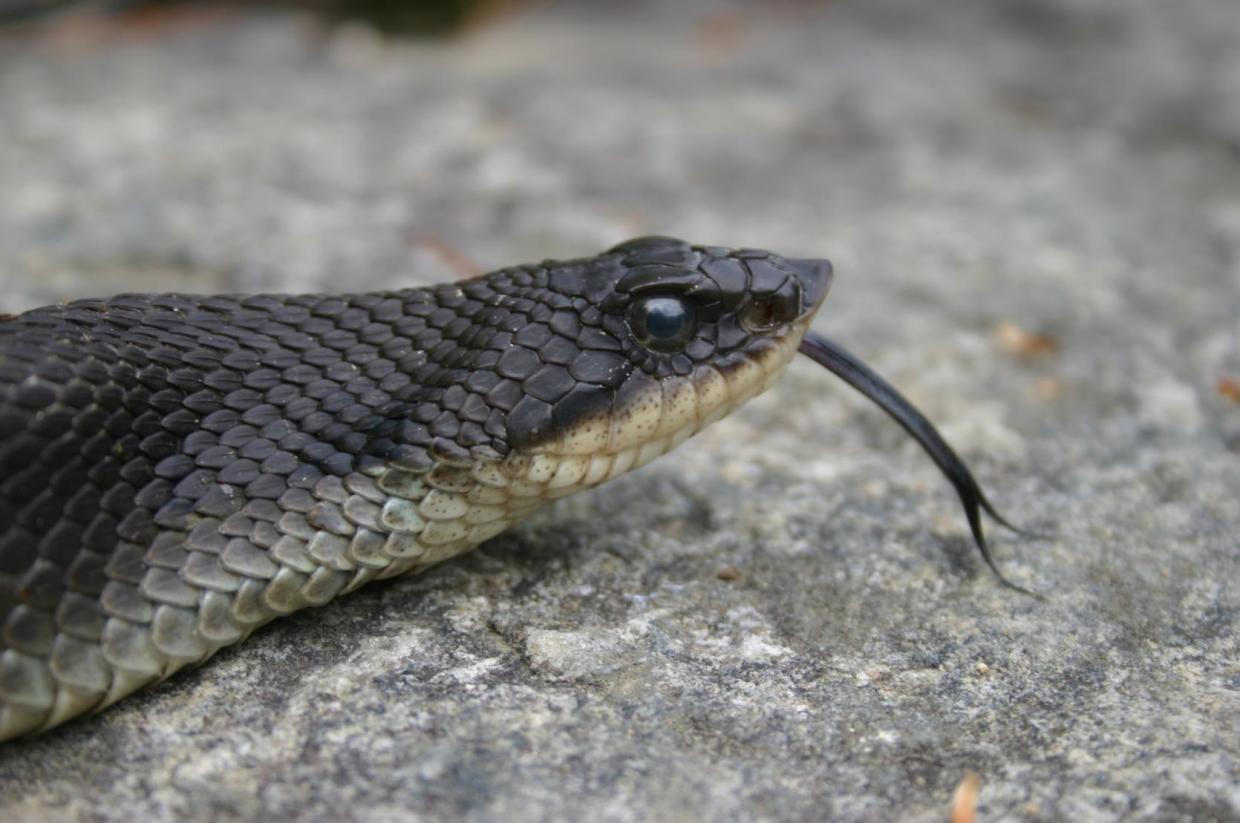MassWildlife’s Natural Heritage and Endangered Species Program conserves and protects the most vulnerable animal and plant species of Massachusetts and the habitats upon which they depend.
Description
Common name: Eastern hog-nosed snake
Scientific name: Heterodon platirhinos
Size: 28 – 46 inches long
Range in Massachusetts: Eastern hog-nosed snakes are known from Franklin, Hampshire, Hampden, Worcester, Middlesex, Norfolk, Bristol, Plymouth, and Barnstable Counties below 300 meter elevation.
Range in North America: Eastern United States and southern Canada, ranging from southern New England to peninsular Florida, west to central Texas, and north along major river valleys to the upper Mississippi basin and possibly the southern Lake Superior shore of Minnesota and Wisconsin.
MA conservation status: Special concern
Federal conservation status: Not listed
Fun facts
- The hog-nosed snake is a stage-worthy actor. When stressed, the snake will flatten its head and neck and hiss, trying to appear more intimidating (and much like a cobra).
- If the stress continues, the snake will play dead. It will lay on its back with its mouth open, appearing to a predator to be dead. It furthers the “play dead” performance by defecating to make it smell unpalatable.
- Although they harmlessly strike with a closed mouth and virtually never bite, the hog-nosed snake is frequently misidentified as a venomous species.
- Hog-nosed snakes are extreme dietary specialists; they are able to tolerate toxins exuded by toads, their main prey.
- Females can lay up to 40 eggs at a time. These hatch into 7–9 inch young in less than 2 months.
- The hog-nosed snakes are now estimated to have diverged from their closest living relative in Massachusetts—the worm snake—roughly 30 million years ago.
Threats and conservation
- The major threats to this species are habitat loss and road mortality.
- Predators of this snake include birds of prey, milk snakes, and racers.
- MassWildlife conducts habitat management projects at sandplains, pine barrens, and grasslands at several sites and WMAs in Franklin County and on Cape Cod. These efforts benefit the hog-nosed snake.
How you can help
- Report any observations of hog-nosed snakes (dead or alive) to MassWildlife’s Natural Heritage and Endangered Species Program (NHESP). Click here for instructions to submit rare species observations.
- Contribute observations of road-killed snakes to the Linking Landscapes database.
- Support conservation and management of habitats, including the use of prescribed fire to restore critical habitats.
-
MassWildlife's Natural Heritage and Endangered Species Program is responsible for the conservation and protection of over 400 rare animals and plants, including Eastern hog-nosed snakes. This work is primarily funded through grants and donations from supportive citizens. Support rare species conservation in Massachusetts—donate today!
